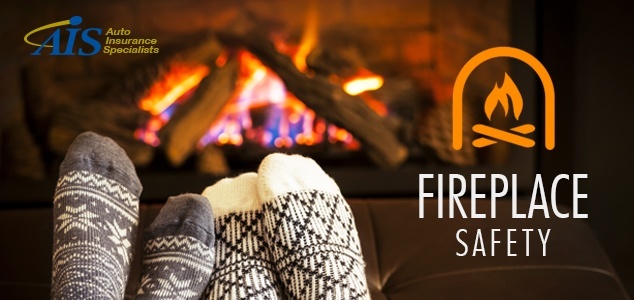Blissful Warmth by the Fire
There’s really nothing more gratifying than coming in from the winter cold and plopping yourself down next to a fireplace set aflame. All the better, too, if it’s during the holiday season and there’s good company around to enjoy the warmth with you.
In many parts of the country, there’s still a lot of winter cold ahead, which means plenty more time to camp out next to one of man’s earliest discoveries with a good book or Netflix. As you do, though, it’s the perfect time of year to make sure that your carbon monoxide detectors are up to date.
The Forgotten Lifesavers
It’s not something that we consider a lot (maybe until that persistent beeping from your monitor acts up every few years or so indicating a failing battery) but unlike smoke from a fire, carbon monoxide (CO) is a colorless, tasteless and odorless gas that is deadly—and virtually impossible to detect without sensing technology. The gas, known as the “silent killer,†is produced by incomplete combustion of carbon-containing materials—meaning, if you have a fire, you have CO.
Other common sources of carbon monoxide in the home also include any number of malfunctioning fuel-burning devices: furnaces, space heaters, water heaters, gas stoves and blocked chimneys or flues. If this all sounds a bit dire and threatening, it is—or certainly can be. Elevated levels of CO can be dangerous to humans depending on amounts and exposure times. While the gas can be fatal when inhaled because it inhibits the blood’s capacity to carry oxygen, initial poisoning symptoms look very similar to the flu without the fever: dizziness, headaches, nausea, drowsiness and fatigue.
Functioning carbon dioxide detectors in homes, of course, sound the appropriate alarms before dangerous levels of CO accumulate. This offers enough warning time to allow us to safely ventilate the area or completely evacuate. CO detectors truly are life-savers, which is why an increasing number of states are passing legislation that mandates their presence in houses.
 Ensuring your Safety with a Carbon Monoxide Detector
Ensuring your Safety with a Carbon Monoxide Detector
This winter, here’s what you need to know to keep yourself safe from carbon monoxide:
- While many companies advertise functionality of carbon monoxide detectors up to seven years, the gas sensors in CO alarms typically last two to five years. Unfortunately, the test button on the alarms only reveal battery and circuitry functionality—not that of the sensor. You should test your CO sensors with a calibrated test gas source, as recommended by the latest version of NFPA 720. Replace alarms older than five years.
- Equip your home with carbon monoxide detectors on every level. If your home has only one alarm, it should be in the main bedroom or the hallway outside it.
- Each year, have a qualified technician inspect your heating system, vents and chimney.
- If you’re in the market for a new carbon monoxide detector, they’re very affordable (just upwards of $20 for the least expensive ones or slightly more for those with digital displays that show CO readouts) from online retailers and home improvement stores. Install according to the manufacturer’s directions at least 15 feet away from any fuel-burning appliances.
Enter in Our Free Giveaway!
As insurance experts at AIS, we are genuinely concerned about your safety. That’s why we’re giving away 10 brand new carbon monoxide detectors to 10 lucky participants. To enter into the giveaway, simply leave a comment below AND leave your First name and last name initial (i.e. John D). Winners will be announced here and on our Social media pages on Monday, February 1, 2016. If you want to keep up with our helpful insurance tips, follow us on Facebook or Twitter.
_______________________________________
EDIT:
Winners Announced!
Congratulations to the winners of the AIS Carbon Monoxide Detector Giveaway! If you see you name below, please email marketing@aisinsurance.com with your Full name and Mailing Address (No PO Box Addresses). We will not use this information for anything other than shipping you your Carbon Monoxide Detector!
- Randy D.
- Connie E.
- Kate D.
- Jennifer W.
- Linda L.
- Robin W.
- Sandra B
- Allen P
- Margaret D.
- Rachel F.
**Announcement and instructions for prize will be sent to the e-mail address supplied on the blog and AIS Facebook page. Each entrant is responsible for monitoring his/her e-mail and social media account for prize notification and receipt or other communications related to this sweepstakes. If a potential prize winner cannot be reached by an administrator within four weeks approximately a month, using the contact information provided at the time of entry, or if the prize is returned as undeliverable, that potential prize winner shall forfeit the prize.
——————————————————————-
Photo credit: “Fire.†Ervins Strauhmanis // CC BY 2.0
The information in this article was obtained from various sources. This content is offered for educational purposes only and does not represent contractual agreements, nor is it intended to replace manuals or instructions provided by the manufacturer or the advice of a qualified professional. The definitions, terms and coverage in a given policy may be different than those suggested here and such policy will be governed by the language contained therein. No warranty or appropriateness for a specific purpose is expressed or implied.


